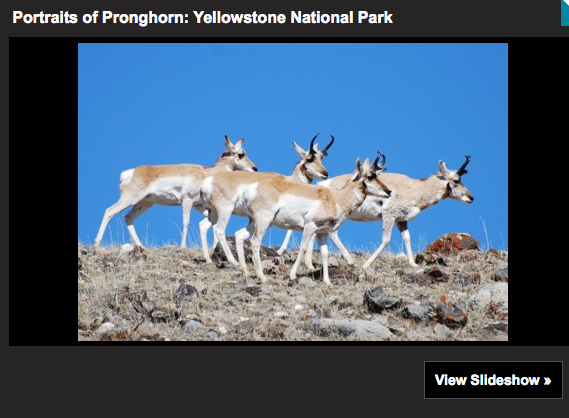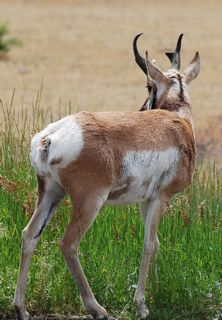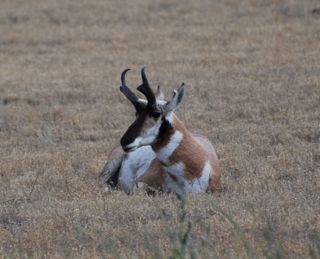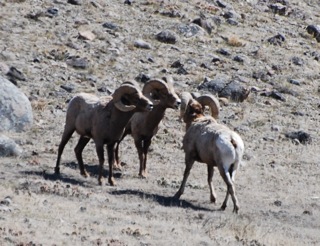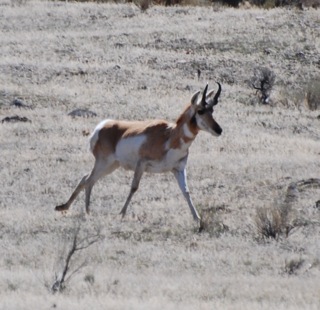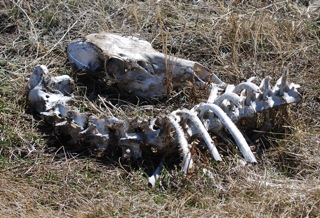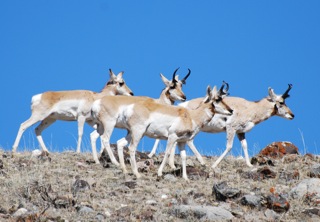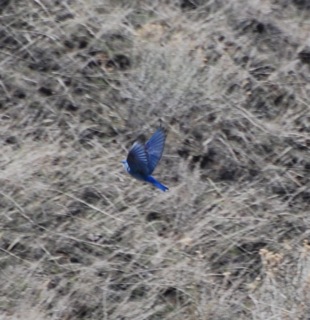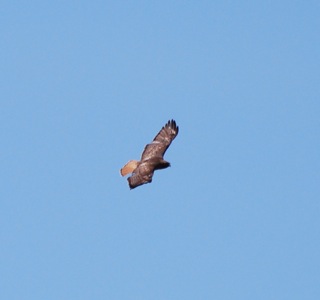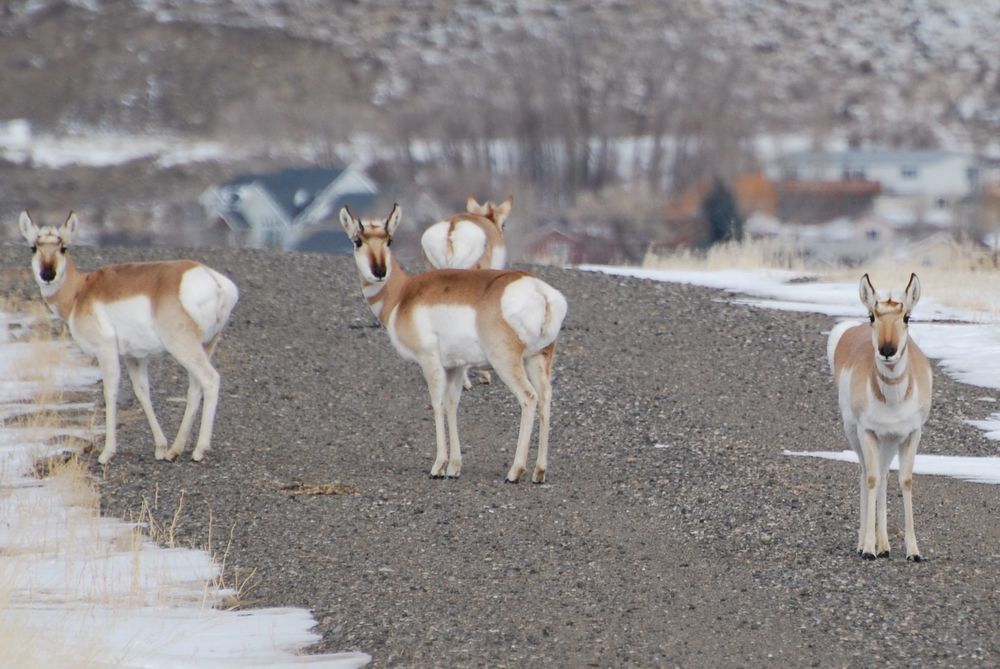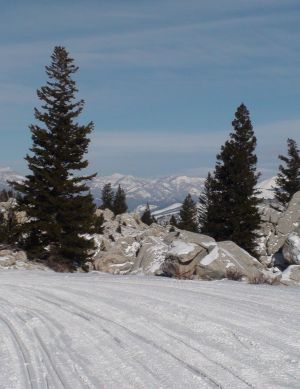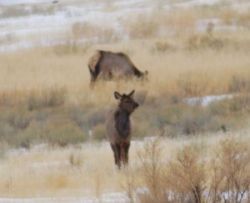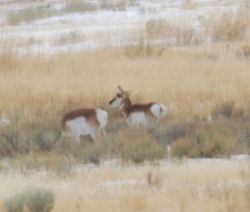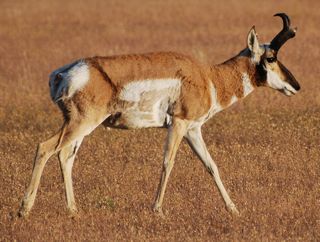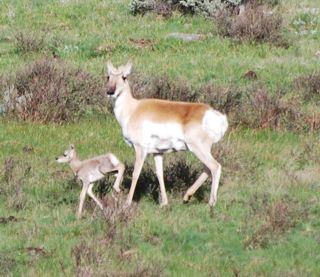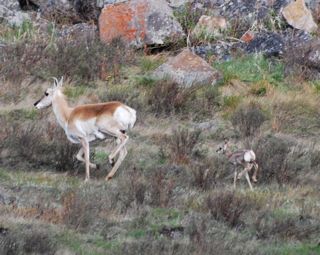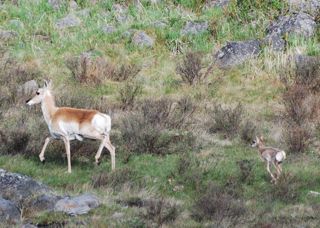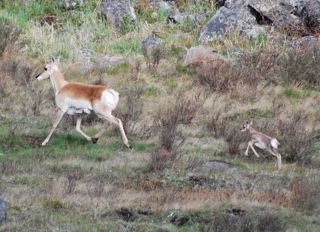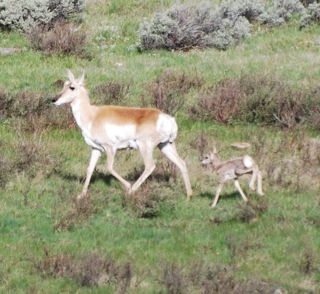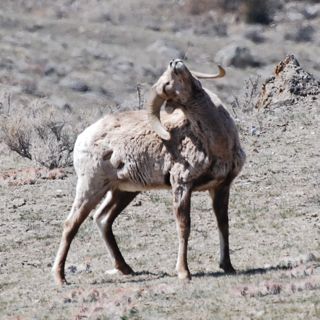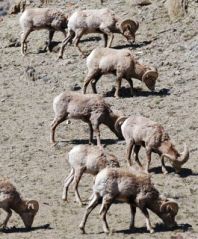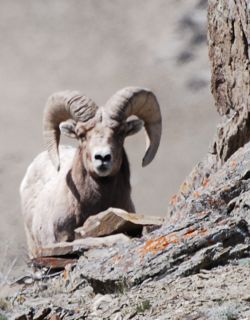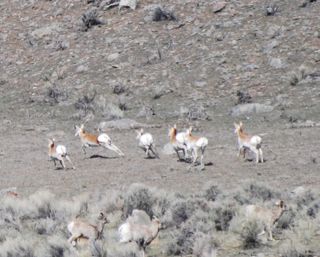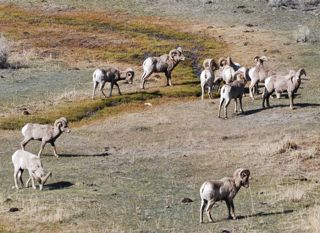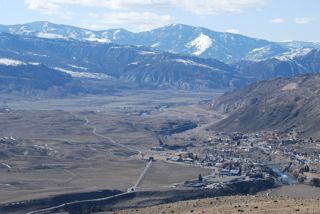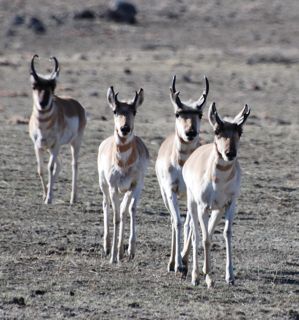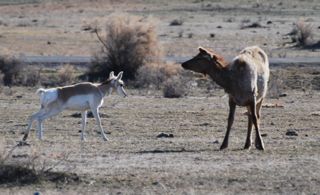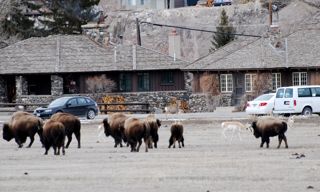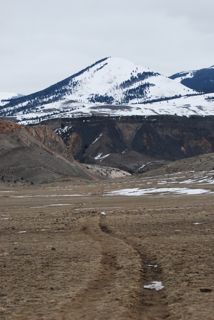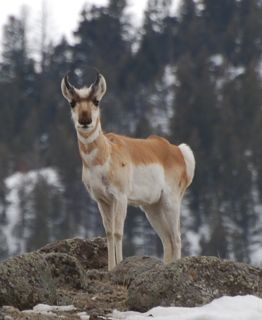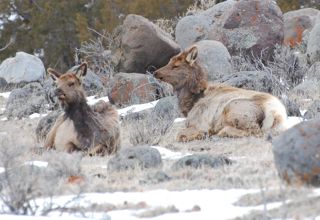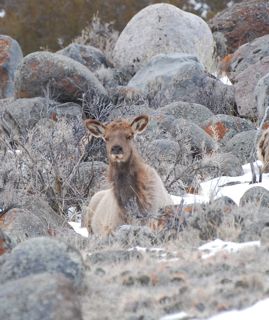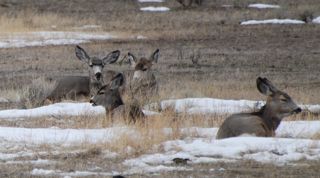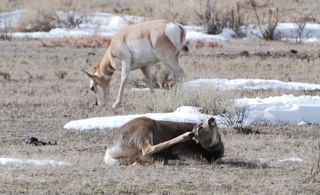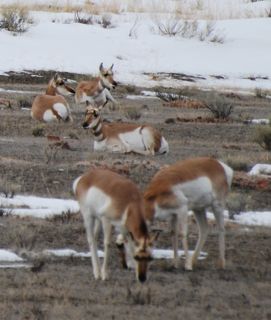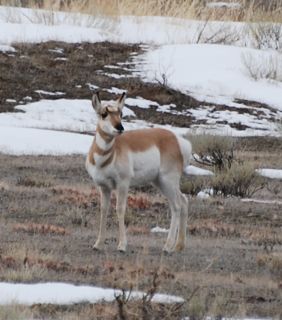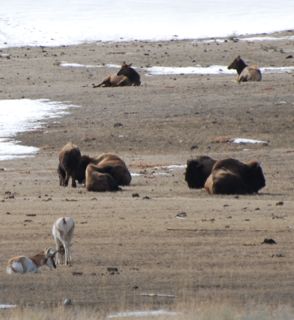 NPCA's Joe Josephson leads a group on a hike following the migration of Yellowstone's pronghorn. Photo: Beth PrattAlthough the focus of yesterday's outing was supposed to be pronghorn, the musical bugling of the rutting elk resounded throughout, and the group encountered several herds, and a few dueling bulls. Yet even with their less showy courtship ritual (primarily a male pronghorn continually herding his harem), the pronghorn did not disappoint. Participants following the footsteps of the ancient animal encountered a small group on the shoulder of Mt. Everts in Yellowstone National Park and watched in delight as the animals loped across the hillsides.
NPCA's Joe Josephson leads a group on a hike following the migration of Yellowstone's pronghorn. Photo: Beth PrattAlthough the focus of yesterday's outing was supposed to be pronghorn, the musical bugling of the rutting elk resounded throughout, and the group encountered several herds, and a few dueling bulls. Yet even with their less showy courtship ritual (primarily a male pronghorn continually herding his harem), the pronghorn did not disappoint. Participants following the footsteps of the ancient animal encountered a small group on the shoulder of Mt. Everts in Yellowstone National Park and watched in delight as the animals loped across the hillsides.
The group, led by National Parks and Conservation Association (NPCA) Wildlife Fellow Joe Josephson, spent the day tracing part of the migration route of the Yellowstone pronghorn.
The nomadic pronghorns that inhabit the western United States wander long distances on their annually migration—research has shown movement up to 300 miles. Yet the migration of Yellowstone’s pronghorn—numbering roughly 300—has been sharply curtailed by human development.
For the pronghorn herds that inhabit the park, a historical migration that once took the animals up the river canyon to nearby Paradise Valley in Montana has now been shortened considerably. Some of the pronghorn even forgo migrating and live year-round near the north entrance and Gardiner, searching out sustenance from the sparse forage during the winter months. Climate change may also be affecting the animals as a drier climate in the west impacts foraging conditions.
Josephson conducts outreach for the NPCA campaign to protect the pronghorn and is working with ranchers and landowners to remove or modify fences to help improve the animal's access through private land. Although pronghorn physiologically have difficulty jumping, they can crawl under fences designed with 18-inch openings on the bottom.
Pronghorn are truly remarkable animals. Called “speed goats” by Lewis and Clark, the fleet-footed creatures can sprint across a grassy steppe at speeds of up to 60 mph. As the fastest land mammal in North America, an adult pronghorn can outrun its predators; even a newborn fawn a couple of days after its birth can run faster than a human. Pronghorn are not true antelope, despite their mention in the well-known song, "Home on the Range," under that name.
Visit the NPCA website for more information about the group’s efforts to protect Yellowstone’s pronghorn.



